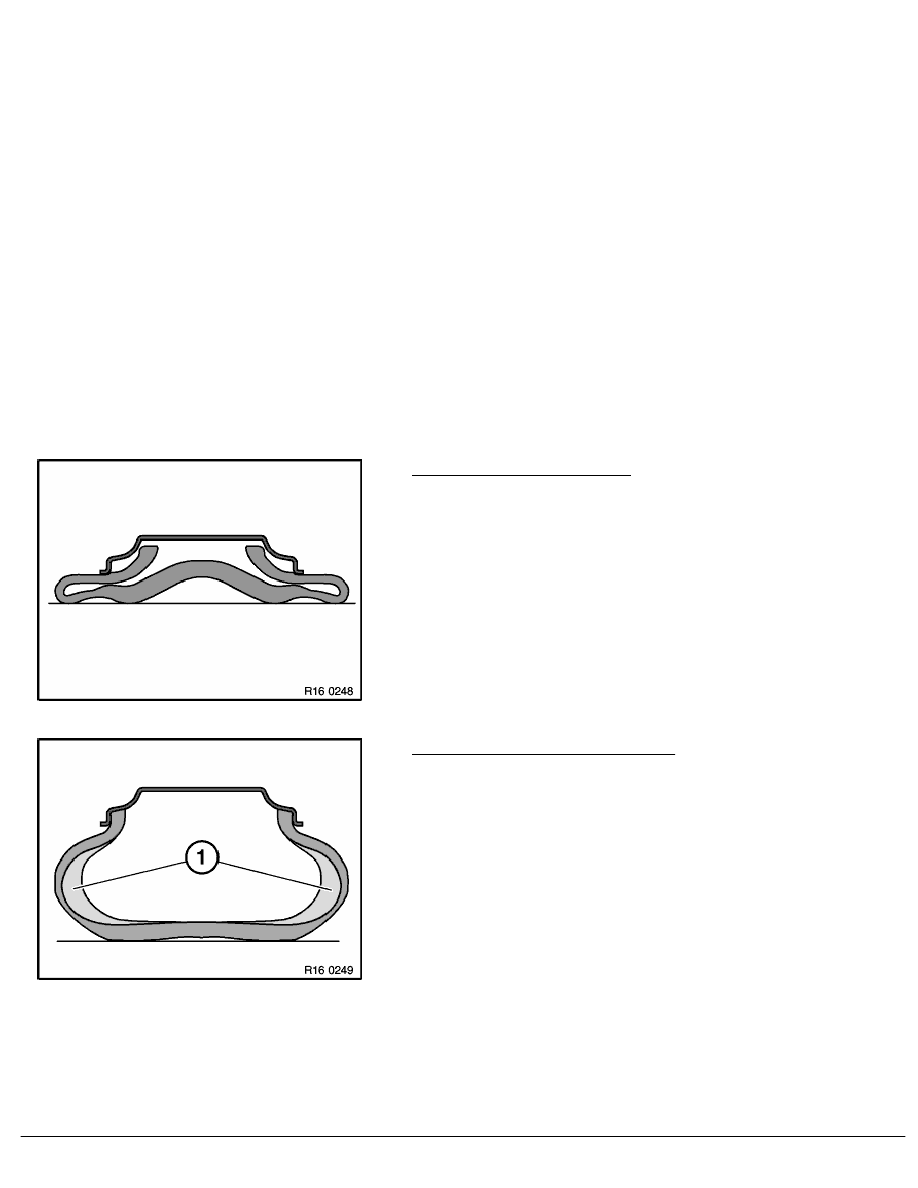5 Series E34 525td (M51) TOUR

Emergency running system with self-supporting tyres
The side walls of the self-supporting tyre are reinforced. In conjunction with a special disc wheel, the tyre can still be
used for a certain distance even if it suffers a complete loss of pressure.
Mobility is retained for the following distances up to a speed of 80 km/h (50 mph) and with a cautious, suitably
adapted driving style:
Unloaded vehicle
max. 500 km (300 miles)
Unloaded roadster
less than 250 km (150 miles)
Fully loaded vehicle
max. 50 km (30 miles)
Self-supporting tyres demand permanent monitoring of the tyre pressure to ensure that the driver is given adequate
warning if pressure is lost during a journey. For this reason, these tyres are only available in conjunction with the
warning system RDW and from 03/2000 also with RDC.
To prevent the self-supporting tyres from becoming detached from the disc wheel in the event of a complete loss of
tyre pressure, they must be fitted to newly developed wheels with modified disc wheel humps, but with unchanged
tyre seating (= standard disc wheel).
However, the new wheels can also be used for standard tyres of the same size.
Comparison standard tyres / self-supporting tyres
Standard tyres, unpressurised
Self-supporting tyres, unpressurised
Envulcanised reinforcement (1) made of a
temperature-resistant rubber compound.
Disc wheels
SBT Tyres with emergency running characteristics and tyre pressure warning systems A
BMW AG - TIS
23.01.2013 11:45
Issue status (12/2007) Valid only until next DVD is issued
Copyright
Page - 7 -
